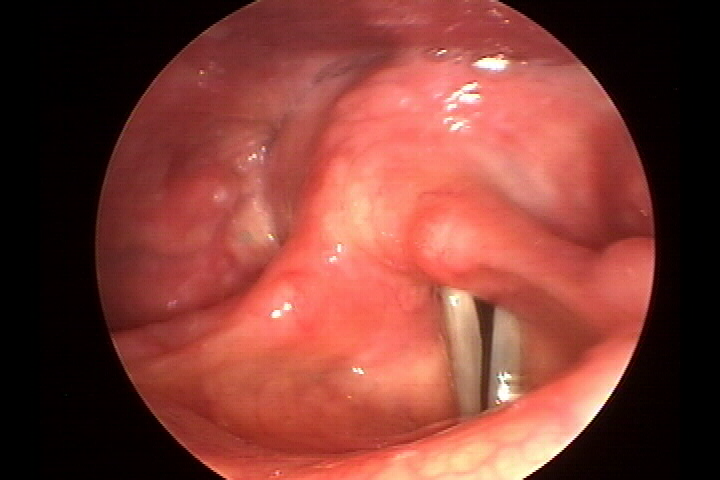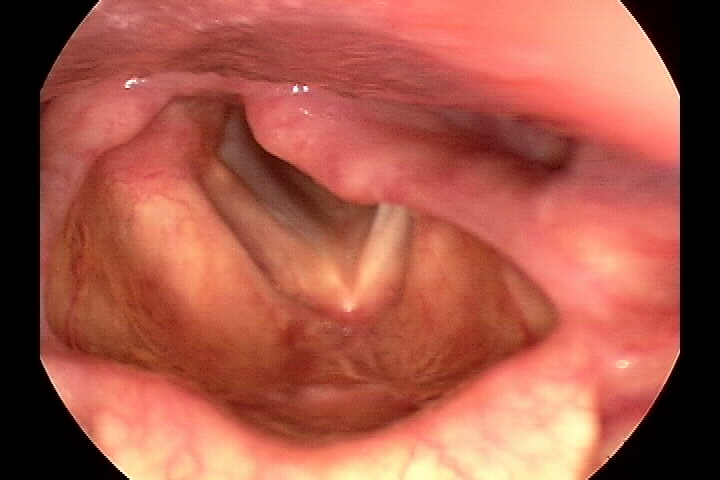Vocal fold paralysis happens when one or both vocal cords lose their ability to move, due to damage to the nerves that control them. This can occur suddenly or gradually and may result from viral infections, surgical complications (such as thyroid or spine surgery), trauma, tumors, or neurological conditions. Sometimes, a growth in the chest, neck, or skull base can press on the nerve, especially the recurrent laryngeal nerve, causing paralysis. If this is suspected, we may order a CT scan of the neck.
When just one vocal fold is paralyzed (unilateral), the voice often sounds hoarse, breathy, or weak, and patients may feel tightness, burning, or fatigue in the throat from the muscles working too hard to compensate. Bilateral paralysis, where both vocal folds are affected, is more rare and can lead to breathing difficulties, noisy breathing (stridor), or even airway blockage in severe cases.
In our office, we use flexible laryngoscopy to view the vocal folds and sometimes additional imaging or EMG to assess nerve function. Some cases recover on their own within months, but others require treatment to improve voice and breathing. We offer in-office vocal fold injection with Restylane to help bring the paralyzed fold closer to the midline, improving voice quality and reducing strain. For long-term issues, surgical options like medialization thyroplasty, fat injection, or reinnervation may be recommended.

Vocal Fold Paralysis

Vocal Fold Paralysis

 YouTube Channel
YouTube Channel
